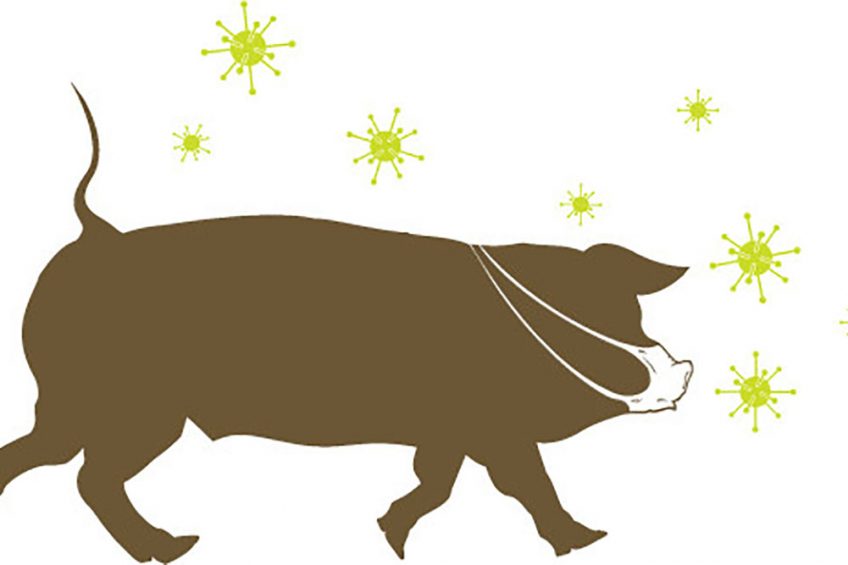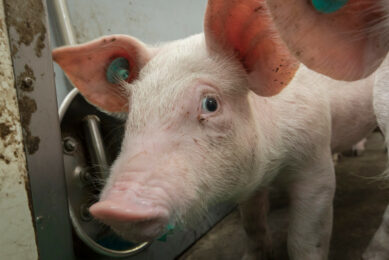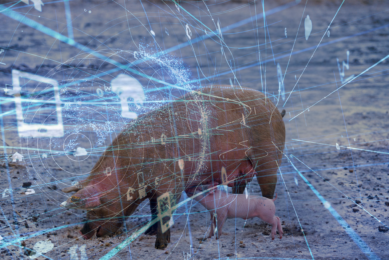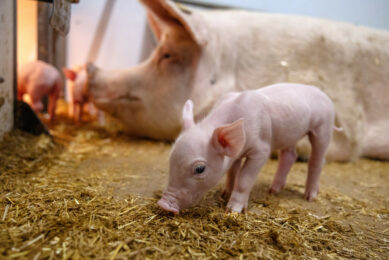A long list of common stress factors for pigs

Stress can have a negative impact on the immunity in pigs – and which type of stress affects them most depends on the age of the animal. Pig management expert John Gadd sums them up – and describes how to be better prepared to keep the stress away from the herd.
Stress is defined as any biological reaction to an adverse stimulus, physical mental or emotional, which disturbs the homoeostasis (‘smooth running’) of the body, be it internally or externally. Many stressors have a harmful effect on immunity, resulting in either a minor reaction (called subclinical) and usually not normally immediately noticeable, or a clinical (obvious or acute) one which is only too quickly apparent.
In farming language – 3 stages
1. First an alarm response, usually immediate, to the appearance of a stressor where the body’s defences activate the hormones adrenaline and no-adrenaline which stimulate the ‘fight or flight’ reaction. Digestion stops, heartrate increases and appetite goes – all profit-zappers!
2. Next the body tries to get itself together by slowing down what can be considered its ‘fast-running engine’ so as to assist in controlling the stressor, the two debilitating hormones, which are partially replaced by useful corticosteroids which take the pressure off growth restriction by adjusting digestion, and slowing the functions of the sex organs especially at ovulation and implantation. But in doing this, so as to give the body some ‘breathing space’, so to speak, they reduce the number of white blood cells which fight disease, so the immune status may be damaged and productivity is worsened.
3. Thirdly, should the body not, or be too slow to respond to these defence measures, exhaustion sets in which interferes with the sugar in the blood (the source of the engine’s fuel) and body reserves can become depleted enough to result in death.
Common stressors throughout a pig’s life
The neonate
• Recovery from the unavoidable stresses of being born, especially the last to do so, thus needing special attention;
• Cleanliness/pathogens;
• Competition from siblings;
• Cold;
• Thirst;
• Inappropriate creep feed (a common error); and
• The ‘post-weaning check’.

The grow-out stage
• Temperature variation is as important as temperature itself, which is why regular supervision of all equipment affecting the pig’s ambient (surrounding) temperature is essential; it can rapidly go wrong;
• Lack of enough space;
• Pathogens;
• Lack of adequate sleep;
• Lack of food and water;
• Growing pigs especially get fractious and anxious if regular attention is missing;
• Bad ventilation – air placement is as important as adequacy;
• Failure in keeping them interested/occupied; and finally
• Bad conditions during transport, handling and lairage.
The farrowing sow
• Ease and length of farrowing;
• Water adequacy and temperature especially in hot conditions;
• Lack of comfort;
• Parasites; and
• Method of weaning.
Gestation
• Ovulation;
• Service;
• Implantation;
• Confinement and comfort;
• Competition (bullying) in groups;
• Design of automatic feeding pens;
• Gut fill/fibre;
• Temperature;
• Legs and floors;
• Parasites;
• Insufficient or bad quality water.
Read more articles from our contributing pig experts
How to keep a handle on all these…
The stress audit is absolutely essential and so is discipline! Done once a month by the same person. Put aside from normal routine.
1. Look at the pigs carefully, without distractions, to pick up abnormal stress-induced behaviour and changes from last time. Why so? Pigs talk to you all the time, so listen to them. They will tell you when things are not right. Then their immune status falls.
2. Check on all devices (thermometers, controllers, sensors, fan speeds, safety overrides). Hoppers and feed troughs, water points – all need watching to ensure the pigs are as comfortable as you can make them. Constipation. Feet and flooring.
3. The stress audit for the owner or manager plays another role to see how well the staff are handling the pigs. For example sows are vulnerable to unsympathetic handling when they accept insemination; still further during the implantation period when the staff are in the ‘get a move on’ mood as there is so much to be done against a time scale. Watch them at work – they may need some help and adjustment to workload. Things must not be hurried at this time as the sow is on a hormonal knife-edge. How are the staff moving – calmly, carefully, methodically?
Stress and immunity are indivisible.











